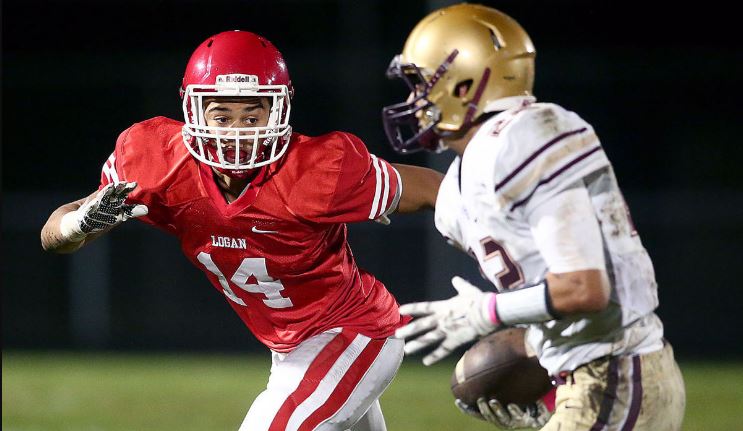By Brock Harney
Defensive Coordinator
La Crosse Logan High School (WI)
Introduction:
 Defending the Flexbone Option offense is a frequent topic of discussion among high school coaches. Well coached Flexbone offenses can be very difficult to stop on a regular basis. Having success against this offense requires some adjustments in game planning, play calling and defensive practice organization. At La Crosse Logan High School, we encounter very high-quality Flexbone offenses in conference play and in our region during the playoffs. I would like to share a few of our adjustments to scouting, building our scheme and our practice that have helped us win some games against this type of offense.
Defending the Flexbone Option offense is a frequent topic of discussion among high school coaches. Well coached Flexbone offenses can be very difficult to stop on a regular basis. Having success against this offense requires some adjustments in game planning, play calling and defensive practice organization. At La Crosse Logan High School, we encounter very high-quality Flexbone offenses in conference play and in our region during the playoffs. I would like to share a few of our adjustments to scouting, building our scheme and our practice that have helped us win some games against this type of offense.
Scouting Flexbone Offenses
The most important aspect of preparing for a specific Flexbone opponent is to get a good idea of “who they are”. Many option teams have a piece of their game that their offense is built around. Typically, in crunch time, when an offense needs a first down, they will rely on this piece of their offense. To create stops on these downs, a defense must be able to recognize what is coming and take it away.
We identify these pieces by the track of the Fullback: Inside Veer (ISV) where the FB tracks at the OG’s inside shoulder, Outside Veer (OSV) where the FB tracks at the OT’s inside shoulder or wider, or Midline where the FB tracks directly down the middle. If the offense’s home base is not one of these plays, then the offense may not be a true option attack and may just be using the Flexbone formation to run a different base offense. In that case, we treat them more like a standard offense.
Here is my mental checklist as I begin scouting a Flexbone option team. These questions give me a pretty clear picture of the type of offense we are about to defend:
Question 1: Is the distribution relatively even between the QB and FB? If not, is the reason related to the defense they are seeing or a particular player they are trying to get the ball to?
We look at distribution of the ball as the first component of game planning against this offense. The distribution helps determine how frequently I will call the player used as the read key onto a specific part of the option. If they have a homerun hitter at one of these spots, we want to encourage the ball to be in someone else’s hands.
Question 2: How often is the QB reading the mesh? (This can usually be determined by watching the quarterback’s point of vision on film). Does the QB give on clear “keep” reads?
If so, there is at least a piece of the offense that is called from the sideline. I will tag “called dive”, “called keep”, “called pitch” in Hudl, this can provide a picture of how often a read is truly happening.
Question 3: How often do the wings receive the ball on a true pitch? Do the WRs block differently on some pitches compared to typical dive progressions?
An uncharacteristic crack block can indicate a called pitch- these are important to note when tagging on Hudl as patterns can emerge quickly. Sometimes an option team will run a called pitch in place of the rocket toss. If the defense has a way to attack the pitch man aggressively in these situations, this is a big turnover opportunity.
Question 4: What types of counter do they run? Wing Counter with/without pull, Air Force Counter, both? If they run both- do, they prefer one type vs odd or even fronts?
This information is important for linebackers when working cutback and backside rules. We always walkthrough counters on Mondays, along with any tells that may tip off they are coming along with where player’s eyes should be trained.
To study game film of this concept, click on the video below:









